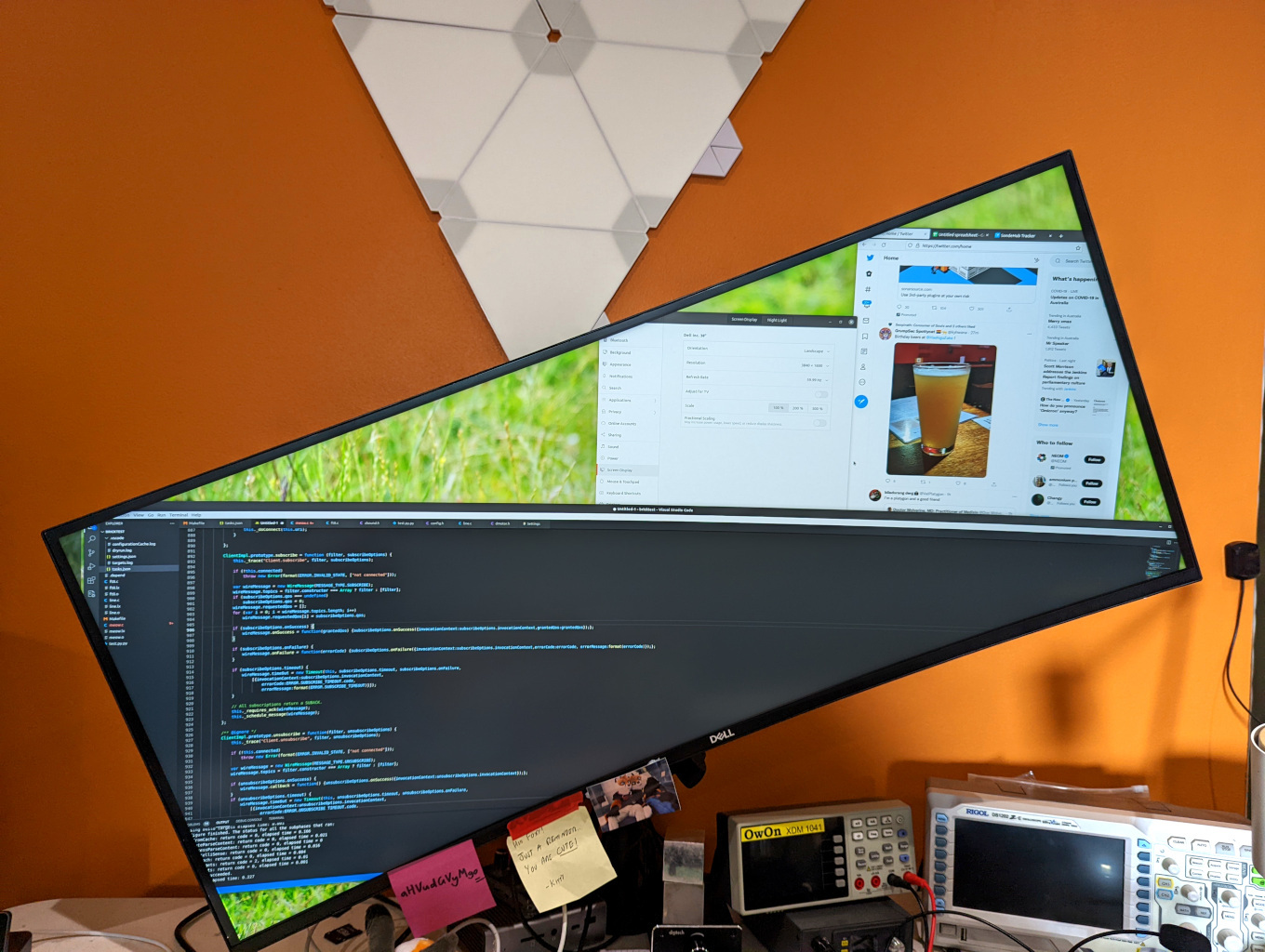Well, with linux you get the option of sending mixed signals through the use of varying count of guns. I find 9 to be highly effective.
- 6 Posts
- 109 Comments

 0·5 months ago
0·5 months agoPrevious job: Windows, because it was a company issue laptop.
Current job: Linux, because I got to keep the perfectly decent Dell laptop when I left. I wanted to make sure I purged everything, so it’s running LMDE now. Plus, there’s not much outlook and teams stuff that I have to use.
I blame Daniel

 31·5 months ago
31·5 months agoUnusable in our case

 10·5 months ago
10·5 months agoNo. Beegfs.

 0·6 months ago
0·6 months agoSome surface-level info while I’m waiting for my kids to finish the evening ritual: No need for an extra IP or VPS. You can host them all on the same IP and machine, provided there aren’tany conflicting port assignments.
In the DNS server, you can enter the various subdomains as CNAME pointing to the A record. The server-software is configured with which hostname it should operate as (For example, HTTP/1.1 has a Host-specification in the initial request, so that one server can host multiple domains on the same IP)
It should be noted that mail servers are indicated by an MX-record. And mailservers should also have a TXT record (SPF record) as part of spam prevention - some SMTP servers query this to ensure that your e-mail actually comes from you and not from someone spoofing the domain.
I used to have a zone file that did roughly what you’re trying to do, bit sadly I don’t have it anymore. But as you have DNS up and running, I’m sure you’ll be able to figure out the rest through checking some examples.
I half-baked an example zone file for you. I haven’t tested it, though. It assumes the domain of blargh.com being hosted from an IP of 123.123.123.123:
$TTL 86400 @ IN SOA ns1.blargh.com. admin.blargh.com. ( 2024102102 ; Serial (incremented) 3600 ; Refresh 1800 ; Retry 1209600 ; Expire 86400 ; Minimum TTL ) ; Name servers @ IN NS ns1.blargh.com. @ IN NS ns2.blargh.com. ; A Records @ IN A 123.123.123.123 ns1 IN A 123.123.123.123 ns2 IN A 123.123.123.123 ; CNAME Records mail IN CNAME blargh.com. mastodon IN CNAME blargh.com. matrix IN CNAME blargh.com. ; MX Records @ IN MX 10 mail.blargh.com. ; TXT/SPF Record @ IN TXT "v=spf1 mx ~all"Oh, and two tips:
- Do not enable SMTP-relay on your SMTP server. This opens you up to abuse, and you (probably) don’t need it.
- Your DNS server should only talk to strangers about queries about your domain. Otherwise you might be part of a DNS amplification attack.
This got me thinking: If I, for some masochistic reason, decided to switch to MacOS - OS it possible to install it on an average PC?
I for one prefer demon linux over fish linux. In fact, that’s how I first dipped my toes into the world of unix-ish OSes with FreeBSD 3.3.
In my book WSL and VM share the same downside in that you’re only abstracting Linux functionality in relation to the hardware.
Linux really shines when it has full access to the actual hardware as opposed to asking it’s environment nicely if it’s allowed to do something.
For example, I routinely need to change my IP address to talk to specific networks and network hosts, but having to step over the virtualisation or interpretation layer to do so is just another step, thus removing the advantage of running linux in the first place.
Sure, VMs and dual booting have their uses, but the same uses can be serviced by an actual linux install while also being infinitely more powerful.
I played around with WSL for a while, but you notice really quickly that it is not the real thing. I’ve used virtual box for some use cases, but that too feels limiting ad all of the hardware you want to fully control is only abstracted.
I would say that unless he has a really good reason why he wouldn’t want to go for dual boot, then he should do just that.
Meh, init 6, you coward

 0·7 months ago
0·7 months agoBy promoting the distris that have this as a goal, such as Mint.
I would suggest Ubuntu in this category, but… eww…
Pretty much when you posted that, I found this in my dmesg:
[ 715.744332] e1000e 0000:00:1f.6: Interrupt Throttling Rate (ints/sec) set to dynamic conservative mode [ 715.965683] e1000e 0000:00:1f.6: The NVM Checksum Is Not Valid [ 716.008541] e1000e: probe of 0000:00:1f.6 failed with error -5Just for the record, I compared modinfo up against lspci, and the PCI ID matches, so the driver should work. Is it possible to ignore the NVM checksum and try anyway? Because any tool I can find that communicates with the EEPROM on a hardware level is made for msdos.
Derp, I don’t think I ever did a modprobe. Anyway, I did an rmmod as I found out that there’s a newer version out, and I’m currently working on building the new version.
UPDATE: Newer version built, installed, and loaded.

 15·7 months ago
15·7 months agoThat’s more of an OnlyFans thing

 4·7 months ago
4·7 months agoThis ought to be interesting. While I’m sure it won’t result in another “What’s the Story?”, seeing them perform together again would still be rad.
I was thinking along the same lines. Use the online version available via portal.office.com, and use that to convert everything to something more FOSS-friendly.
Not sure if access is free, though.
I actually like that name, but it might be too close to the original for trademark comfort.
I for one really appreciate the effort of supporting non-AT drives despite the initial skepticism.

 0·8 months ago
0·8 months agoThe alternative was 5mbit/s VSAT. 4G was a luxury at that time.



If you use arch you have to start knitting